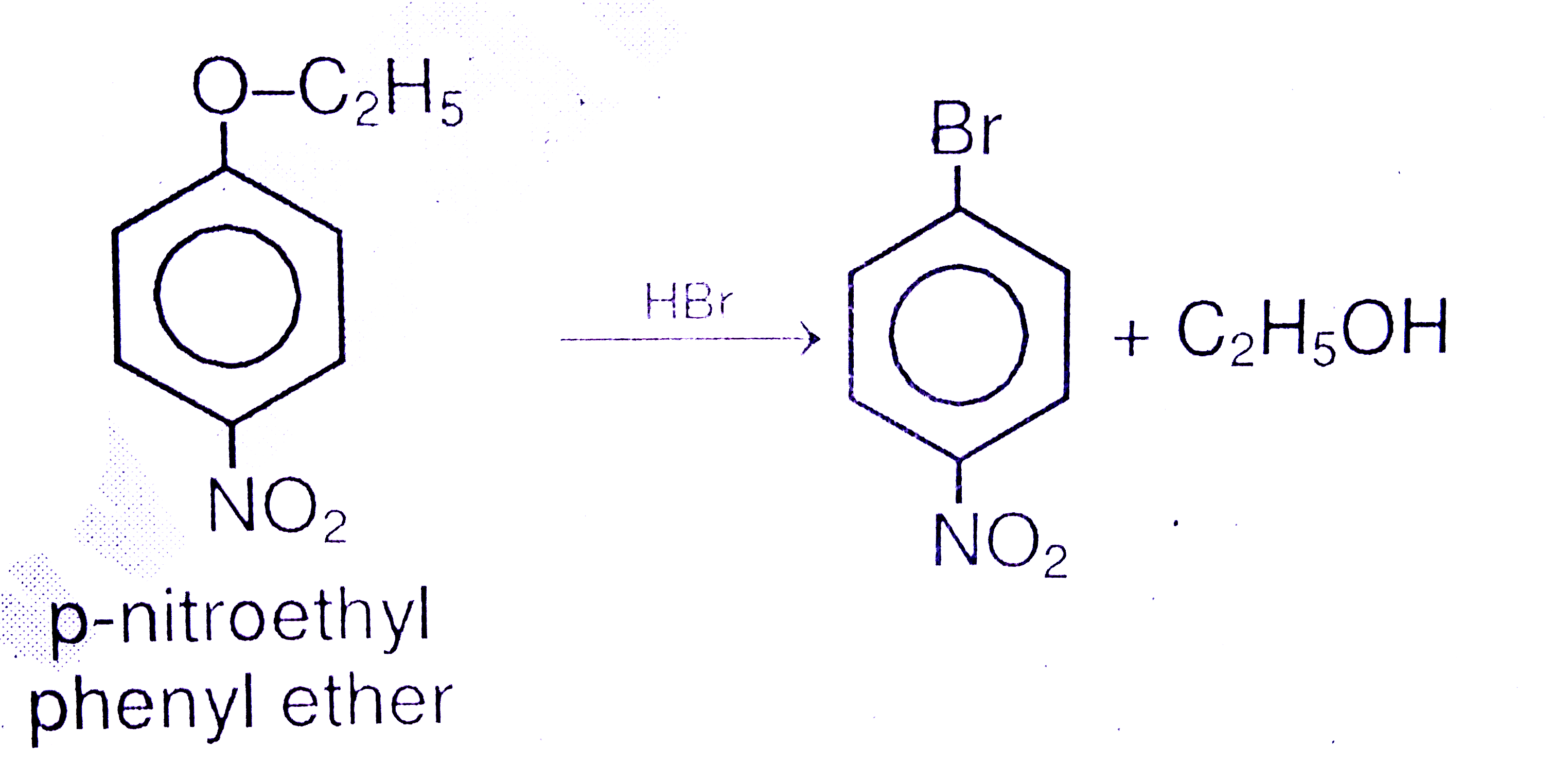Assertion: tert-butylbromide undergoes SN1 nucleophilic substitution readily than n-butyl bromide.
Reason: It proceeds by the formation of stable carbocation.
Assertion and reason both are correct statements and reason is correct explanation for assertion.
Assertion and reason both are correct statements but reason is not correct explanation for assertion
Assertion is correct statement but reason is wrong statement.
Assertion is wrong statement but reason is correct statement.
The correct Answer is:A
To solve the question regarding the assertion and reason about tert-butyl bromide and n-butyl bromide undergoing nucleophilic substitution, we will analyze each part step by step.
Step 1: Understanding the Assertion
The assertion states that tert-butyl bromide undergoes SN1 nucleophilic substitution more readily than n-butyl bromide.
- Tert-butyl bromide has the structure (CH3)3CBr.
- N-butyl bromide has the structure CH3CH2CH2Br.
Step 2: Mechanism of SN1 Reaction
The SN1 mechanism involves two main steps:
1. Formation of a carbocation by the loss of the leaving group (in this case, bromide ion).
2. Nucleophilic attack on the carbocation.
Step 3: Carbocation Stability
The stability of the carbocation formed during the SN1 reaction is crucial for the reaction rate.
- Tertiary carbocation (from tert-butyl bromide) is more stable due to hyperconjugation and inductive effects from the surrounding alkyl groups.
- Primary carbocation (from n-butyl bromide) is less stable because it has fewer alkyl groups to stabilize the positive charge.
Step 4: Comparing Carbocation Formation
- When tert-butyl bromide loses bromide, it forms a tertiary carbocation:
(CH3)3C+
- When n-butyl bromide loses bromide, it forms a primary carbocation:
CH3CH2CH+2
Step 5: Conclusion on Assertion
Since the tertiary carbocation is more stable than the primary carbocation, the assertion is true: tert-butyl bromide undergoes SN1 nucleophilic substitution more readily than n-butyl bromide.
Step 6: Understanding the Reason
The reason states that the reaction proceeds by the formation of a stable carbocation. This is indeed correct because the stability of the carbocation directly influences the rate of the SN1 reaction.
Step 7: Conclusion on Reason
The reason is true and correctly explains why the assertion is true.
Final Conclusion
Both the assertion and reason are true statements, and the reason correctly explains the assertion. Therefore, the answer is that both the assertion and reason are true, and the reason is the correct explanation for the assertion.
The assertion states that tert-butyl bromide undergoes SN1 nucleophilic substitution more readily than n-butyl bromide.
- N-butyl bromide has the structure CH3CH2CH2Br.
The SN1 mechanism involves two main steps:
1. Formation of a carbocation by the loss of the leaving group (in this case, bromide ion).
2. Nucleophilic attack on the carbocation.
The stability of the carbocation formed during the SN1 reaction is crucial for the reaction rate.
- Primary carbocation (from n-butyl bromide) is less stable because it has fewer alkyl groups to stabilize the positive charge.
- When tert-butyl bromide loses bromide, it forms a tertiary carbocation:
(CH3)3C+
- When n-butyl bromide loses bromide, it forms a primary carbocation:
CH3CH2CH+2
Since the tertiary carbocation is more stable than the primary carbocation, the assertion is true: tert-butyl bromide undergoes SN1 nucleophilic substitution more readily than n-butyl bromide.
The reason states that the reaction proceeds by the formation of a stable carbocation. This is indeed correct because the stability of the carbocation directly influences the rate of the SN1 reaction.
The reason is true and correctly explains why the assertion is true.
Both the assertion and reason are true statements, and the reason correctly explains the assertion. Therefore, the answer is that both the assertion and reason are true, and the reason is the correct explanation for the assertion.
Topper's Solved these Questions
- HALOALKANES AND HALOARENESBOOK - MODERN PUBLICATIONCHAPTER - HALOALKANES AND HALOARENESEXERCISE - REVISION EXERCISE (Very short Answer Questions)
31 Videos
- HALOALKANES AND HALOARENESBOOK - MODERN PUBLICATIONCHAPTER - HALOALKANES AND HALOARENESEXERCISE - REVISION EXERCISE (Very short Answer Questions) (CBSE Qs....)
10 Videos
- HALOALKANES AND HALOARENESBOOK - MODERN PUBLICATIONCHAPTER - HALOALKANES AND HALOARENESEXERCISE - REVISION EXERCISE (Objective Questions) (Passage based questions)
10 Videos
- EQUILIBRIUMBOOK - MODERN PUBLICATIONCHAPTER - EQUILIBRIUMEXERCISE - Unit Practice Test
13 Videos
- HYDROCARBONSBOOK - MODERN PUBLICATIONCHAPTER - HYDROCARBONSEXERCISE - UNIT PRACTICE TEST
15 Videos
Similar Questions
Knowledge Check
Assertion:

Reason: due to formation of highly stable carbocation.AIf both assertion and reason are true and reason is the correct explanation of assertion.BIf both assertion and reason are true but reason is not the correct explanation of assertion.CIf assertion is true but reason is false.DIf both asertion and reason are false.Which of the following undergoes nucleophilic substitution exclusively SN1 mechanism?
ABenzyl chlorideBEthyl chlorideCChlorobenzeneDIsopropyl chlorideSN2 mechanism proceeds through formation of :
ACarbonium ionBTransition stateCFree radicalDCarbanion
Which of the following undergoes nucleophilic substitution exclusively SN1 mechanism?
View SolutionSN2 mechanism proceeds through the formation of
View SolutionWhich of the following undergoes nucleophilic substitution exclusively by SN1 mechanism?
View SolutionWhich of the following undergoes nucleophilic substitution exclusively bySN1 mechanism ?
View SolutionWhich of the following undergoes nucleophilic substitution exclusively by SN1 mechanism?
View Solution
